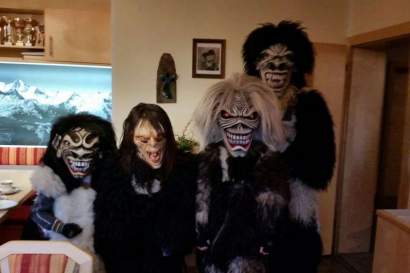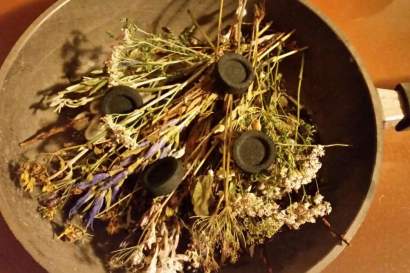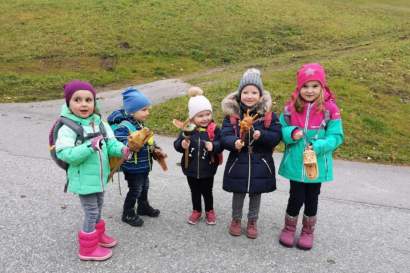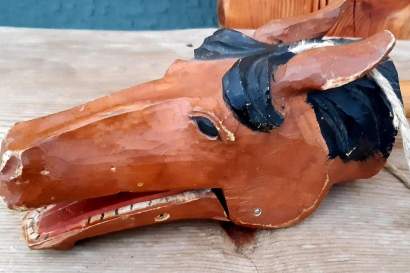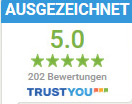Kals traditions
A brief insight into our Kals traditions throughout the year
Saint 3 kings | 6. Jänner
On the evening before, incense is burned in the houses*.
The three kings go from house to house a few days beforehand and collect for a social cause. On January 6th, the three kings are usually present at the service in the parish church.
"Speckpfinstig" | nonsensical thursday
This is the Thursday before Ash Wednesday.
This was the last day before Lent, when people used to eat meat in their homes. That's why a special meal was cooked on this day - bacon with bread dumplings and sauerkraut. This traditional meal is still eaten on Speckpfinstig in many farmhouses today.
Carnival Tuesday
The people of Kals are rather "carnival grouches", in Ködnitz there is usually a parade from the kindergarten and elementary school in the morning. Shrove Tuesday is therefore a "completely normal working day".
Ash Wednesday
The beginning of Lent. Ash Wednesday is a strict day of fasting (e.g. no meat is eaten). During the service in the parish church, a cross of ashes is placed on the forehead. The priest blesses the ashes through prayer and sprinkling with holy water and places them on all those who come before him. The donor speaks the following words to each individual when marking them with the ash cross: "Remember, man, that you are dust and will return to dust".
Palm Sunday
The beginning of Holy Week. On Palm Sunday, people go to Holy Mass with the palm branches or palm bushes. The palm branches are consecrated by the priest. At home, the branches are placed on the crosses in the corner of the altar and in the stable to protect the house and yard from lightning and fire. Some of the palms are kept and used together with the herbs from Women's Day for burning incense.
Maunday Thursday
On Maundy Thursday, the church bells fly "to Rome". The ratchet is used instead of the bell.
Easter Saturday
The consecration of food takes place on Easter Saturday. There, ham, Easter eggs, Easter wreath, bread, butter, wine... are placed in a basket and covered with a special Easter cover. The consecration takes place in the parish church and afterwards the consecrated food is eaten at the Easter snack.
Easter Sunday
The liturgy begins in the Easter Vigil late on Saturday evening. Now the resurrection of Jesus is celebrated and the church bells return at the Gloria. On Sunday, the Easter bunny hides a nest for the children, which is then eagerly searched for after Holy Mass.
National holiday| 1. Mai
The state holiday was introduced for the first time by law on April 25, 1919 for the First Republic of Austria on November 12 in "perpetual commemoration of the proclamation of the Free State of German Austria". At the same time, the National Assembly elevated May 1 to a "day of rest and celebration".
Maypole
The maypole is erected next to the church in Lesach a few days before May 1st. There is a maypole association that takes care of it. The maypole is guarded day and night so that nobody cuts it down. Only people from another municipality can cut down a maypole. On 30.04. or 01.05. there is then a big celebration with a maypole festival in Lesach. The maypole is also auctioned off there. The winner can use the maypole as firewood.
Ascension Day
In the Christian faith, refers to the return of Jesus Christ as the Son of God to his Father in heaven. Ascension Day is celebrated on the 40th day of the Easter cycle, i.e. 39 days after Easter Sunday. In Kals, First Communion is often celebrated on this day.
Pentecost
Is a Christian festival. On the 50th day of the Easter cycle, i.e. 49 days after Easter Sunday, believers celebrate the sending of the Holy Spirit - known as the mystery or iconographically as the sending of the Holy Spirit or the outpouring of the Holy Spirit. Confirmation usually takes place at Pentecost
Corpus Christi
Corpus Christi, or the Feast of the Most Holy Body and Blood of Christ, is a high feast in the liturgical year of the Catholic Church that celebrates the bodily presence of Jesus Christ in the sacrament of the Eucharist. On this day, a procession takes place from the parish church of St. Rupert to Grossdorf, where Holy Mass is celebrated in St. Petronilla, followed by the procession back to the parish church
Mary Ascension | „Hoher Frauentag“ | 15. August
For 59 years, the Tyrolean provincial government has commemorated the liberation of Tyrol in 1809 with the feast of the Assumption of the Virgin Mary as a national holiday. This was intended to preserve the strength of faith, the will to freedom and the love of country of the heroic defenders of Tyrol for the present and future generations. The intention was also to dedicate a work of gratitude and veneration to "Our Lady of Tyrol", because she had often and obviously protected the country in times of general national distress.
A procession takes place in Ködnitz on Our Lady's Day. Afterwards, the Kals music band celebrates its brass band festival in the music pavilion.
St. Rupert | church day | 24. September
As our parish church is dedicated to St. Rupert, the Kalser Kirchtag is celebrated on the Saturday before September 24th. The celebration begins with a procession through Ködnitz. Afterwards, the Schützenkompanie and the Schützgilde celebrate their festival in the pavilion. Various stalls are set up in front of the pavilion - much to the delight of the children. In the evening, the traditional party of the Landjugend Kals takes place in the Stüdlsaal.
National holiday| 26. Oktober
The Austrian National Day has been celebrated annually since 1965 on October 26, the day on which Austria's neutrality came into force in 1955 and the last occupying powers left Austria. This day of remembrance replaced the former Day of the Flag as the national holiday.
All Saints| 1. November
The deceased are remembered on All Saints' Day. Holy Mass is held at 2 pm with a visit to the graves.
Afterwards, children go from house to house in small groups and ask for a gift on behalf of the poor souls with "Vergelt's Gott für die Armen Seelen!". You can hear them coming from afar:
The rattling sound of the wooden "snap figures" can be heard far and wide. These consist of a handle with various animal heads attached to the end. The movable lower jaw of these heads can be opened and closed with the help of a string, causing the rattling (or snapping) sound.
The children go from house to house until nightfall. The front door is opened by the people of the house, the children snap, receive "Krapfen", fruit, a sweet etc. or occasionally (rather rarely) money and thank them with "Thank God for the poor souls". In the past, the main reward for the children was the "Krapfen" of the same name. A visit from the Krapfenschnapper was supposed to bring good luck to the inhabitants of the house in the following year.
Krampus | 1. – 6. Dezember
St. Nicholas goes from house to house with the Engerln, Lotter and Litterin, Spielmann and the Krampusen. In Kals there are two groups - the little Krampus and the big Krampus - so each house receives two visits. The good children are given presents by St. Nicholas and the naughty children are punished by the Krampus. The two groups are given money in the houses, which is used for the association and part of it is donated to families in need in Kals or to a church/chapel. The Krampus is then bid farewell on the last day with the ringing out of the bells and table pulling.
Christmas | 24. Dezember
In most houses, the Christmas tree and crib are set up and decorated during the day on December 24th. On Christmas Eve, Gratz Norbert and his helpers go from house to house and bring the peace light. He picks it up at the train station in Lienz in the morning and then distributes it to all the houses in Kals.
At 5 pm there is a mass for the children and at 10 pm there is Christmas mass. The Christmas celebration begins with the smoking. Before the smoking procession, the farmer goes to the surrounding fields to carry consecrated salt. This is followed by a short house church service by the Advent wreath. This is followed by a meal - each house has its own special Christmas meal. During the meal, the Christ Child places the presents under the Christmas tree (which is usually in the living room) and when the bell rings, you can enter the living room and find a beautiful tree with presents underneath.
New Year´s Eve| 31. Dezember
On New Year's Eve, salt is once again consecrated and smoked*. Afterwards, New Year's Eve is celebrated in families, with friends or on the mountain and at midnight there are fireworks to marvel at all over Kals.
*smoke - räuchern
To burn incense, consecrated dried herbs and palm branches, charcoal and incense are placed in a pan. This is then passed around the house and into the stable and a rosary is prayed. The incense is said to protect the house and farm, family and animals from evil and misfortune. Incense is burned on 24.12., 31.12. and 05.01.
*to bring consecrated salt to the meadows
On 24.12., 31.12. and 05.01. the farmer carries consecrated salt over the surrounding fields from the farm so that they thrive and the animals stay healthy.
*Prozession
The procession is attended by all associations and the population in their festive costumes. It is a festive, ecclesiastical procession during which the Blessed Sacrament is exposed. Altars are erected in the village where a gospel is read out. The procession is intended to consecrate the village and its inhabitants and bring good luck and blessings.
That was just a brief insight into the customs of Kals.
You can find many interesting and detailed explanations in the Chronicle, Volume II, from page 210.








